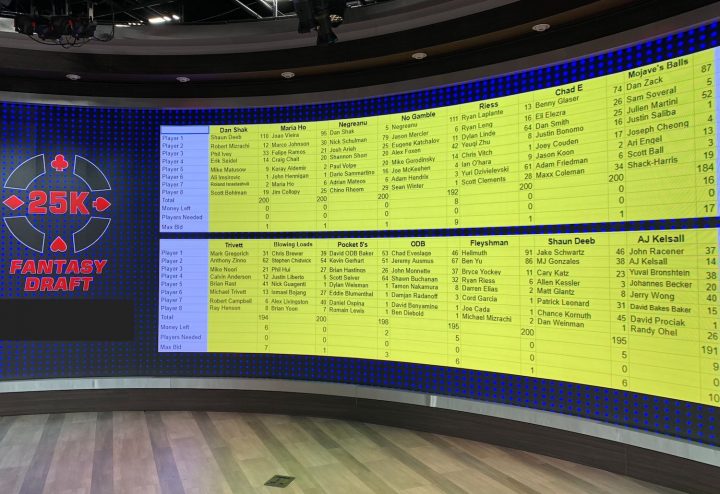Ed. note: This is the eighth in a series of articles designed to help recreational tournament poker players build their hobby into a profitable endeavor.
If you have been following this series, you know that we have already covered a lot of poker ground. Several beginner level lessons like preflop ranges, understanding board textures, and short stack fundamentals are there for new players to get a leg up at the low ranks right away. But just like any deep tournament run, it’s now time to up the ante and tackle more advanced material with 3-bet pots.
No player enjoys being 3-bet. Once you have announced an interest in your hand with a raise and someone insists they would like to raise the stakes against your holding, it is naturally uncomfortable. It is understandable to feel cautious. The goal of the game is to protect your stack and steadily grow it, right? But in order to excel at multi-table tournaments, you will need to embrace the chaos of this situation, both as a defender and an aggressor.

This means seeing flops with lackluster suited broadways, medium pocket pairs, and other vulnerable hands that must hold on to their equity. If you don’t, good players will recognize your reluctance to put chips in the middle and exploit your caution. By the time you wake up with a hand good enough to play back at them, your stack will have withered away. At low to medium stack depths, the variance of 3-bet pots may be volatile hand to hand. But playing these situations well will vastly improve your results in the long run.
Choosing Bluffs Based on Position
The strategy comes into play as early as preflop. When you are considering whether to 3-bet your opponent, certain hands will be obvious. Any player is going to raise with the best pocket pairs and combinations of AK. But you will need to expand your range in order to get the action you want with those premium holdings. Depending on what position the raise came from, your 3-bet bluff range will change quite a bit. Let’s take a look at a few situations at 80 big blinds effective.
When a player in early position raises and we are soon to act after, say from the lowjack position, our range is going to become quite tight. You may be surprised to find yourself outright folding hands as strong as KJ or AT offsuit. You will want to focus on high card, suited combinations when facing a raise from a range this strong. This will leave you folding 85% of your range and mixing most other options as a call or 3-bet. For example, any combination of suited Broadway cards that doesn’t contain an Ace should be 3-betting as a bluff at least a third of the time. This will get your opponent to fold the worst of their Ax range, while denying others their option to squeeze you out of the pot lightly behind.
Middle position raising ranges are expanded quite a bit, with players opening a wide variety of suited two gappers and raggy offsuit hands. When facing a raise from middle position, you can attack liberally with your offsuit Broadways hands. Middling pocket pairs like 88, 99, and TT are now 3-betting more as well, looking for protection against hands with overs that can’t continue.
Finally, the most common 3-bet bluff spot is a small blind’s 3-bet against a button open. The button will be opening extremely wide at more than 55% of hands. When you have a hand worth playing in the small blind, you should turn up the heat on a huge array of hands. Small blind needs to 3-bet even more than they will call vs the button in the situation. This will include all Broadway combinations and a large portion of suited connectors that can flop well.
Think about your 3-bet bluffs as the hands you want to play but would not be heartbroken to fold to a 4-bet. If the hand qualifies, then it makes a great candidate to turn up the pressure on your opponents. No matter the positions at play, this is a simple rule that usually will guide you toward the right decision.
C-Betting Out of Position
Once you have been called and the pot has swelled, things get interesting. As the 3-bettor, you can’t forget that you have declared that you have quite a strong hand. Despite your opponent’s call being a similar declaration, you have the range advantage by not having been re-raised. You will need to lean on this advantage postflop by betting a small amount, typically 25% of the pot, especially on A and K high boards. Exploitatively, you may decide to go a bit larger to 33-50% pot on lower paired boards, insisting that you have a good overpair and your opponent should muck their Ace high.
That said, exploitation is a huge part of 3-bet pots. In theory, we want to play the most optimal ranges, call and fold when we should, etc. But at the beginner level, we can learn a lot about our opponent’s holdings simply from their call of a 3-bet and flop c-bet. At the lower ranks, you should always be asking yourself “What is my opponent capable of?” in pots where stacks are on the line.
For example, if you 3-bet King-Ten suited from the small blind against a late position open, you may decide to bet closer to ½ pot on a low paired board if you expect your opponent is overfolding. This type of bet would typically lead to a large commitment requiring you to blast turns and rivers to scare off your opponent. But when the typically scared have already shown resilience, you can reasonably allow yourself to back off on these later streets. If your opponent is unbalanced, clearly not the type of player studying the way you are, don’t insist on trying to make them sigh and fold the way they should in theory.
In live poker, it’s extremely important to be aware of player types. Making these reads will help set you up for your 3-bet pots and understand when it is time to blast away and when to put on the brakes. Most players will telegraph what they think about their holdings, so it is up to you to react accordingly.
Balancing Exploits and Theory
Some of this article may surprise the typical reader, as this series has been heavily rooted in theory-based play. In 3-bet pots, I feel more comfortable than ever leaning into exploits to realize equity against opponents at small stakes games.
As a general guideline, I would suggest playing by the book and making theory based preflop 3-bets while sizing up your opponent accordingly once you have made it postflop and beyond. Finding this balance will give you a significant edge considering that many will overcall preflop and overfold postflop, allowing you to take down those bloated pots easily.





